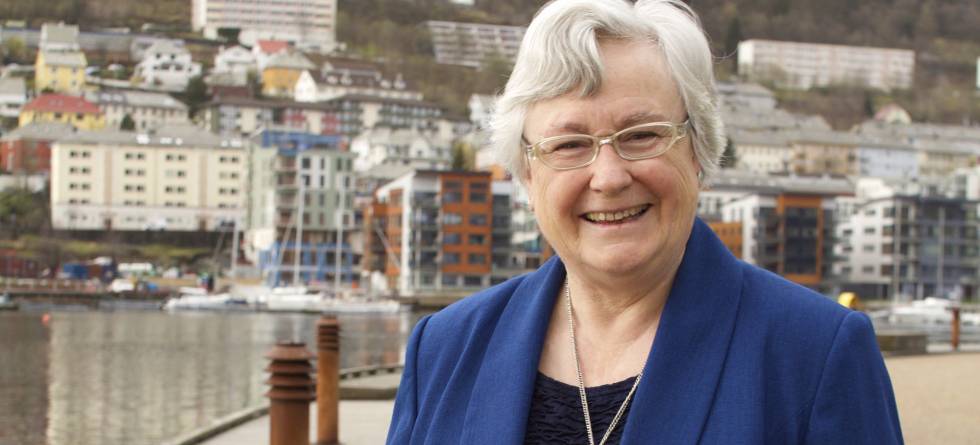In February 2015, Professor Emerita Hilary Birks was elected a fellow of the American Association for the Advancement of Science, thus becoming the third Fellow from Norway. The AAAS honoured her for "extraordinary contributions to Quaternary palaeoecology, particularly in reconstructing landscapes across the periglacial northern hemisphere based on pollen and plant macrofossil assemblages”.
Half a year earlier, her anniversary seminar in Bergen was titled, “It’s all in the detail”. Her colleagues Anne Bjune and Kathy Willis had quietly gathered lecturers, old friends, and collaborators – but what should have been a secret, was not a secret for long.
”My husband is incapable of keeping a secret from me” Hilary laughs, but adds that John was not the only one revealing the secret. The head of the biology institute also mentioned he would attend her seminar – before she was expected to know about it.
In addition to the seminar, her colleagues wrote a special issue of Vegetation History and Archaeobotany dedicated to her.
”We really want to honour Hilary and her many contributions to science. Both the seminar and Festschrift demonstrate her broad and diverse scientific work”, says Anne Bjune, scientist at Uni Research and the Bjerknes Centre.
A new life with macrofossils
In the mid-1980s John and Hilary Birks moved to Bergen from Cambridge. What should have been a one-year research visit, quickly turned into thirty years, as a job offer at UiB conveniently appeared. And because their 12-year old son liked Bergen better than Cambridge, the choice was easy to make. For Hilary, it was also a chance to establish a scientific career.
”In Cambridge I was treated as John’s wife. But here in Bergen we were treated as two individuals, where I also had the chance to get funding for research projects” she says.
In Cambridge she worked in a music shop. As John already had a position at the University she could not also get a permanent position, as the employment of a married couple in one department was not allowed. Selling music was fun, but it was a job with zero macrofossils!
Building up palaeoecology at UiB
In the small UiB community, news of the Birks couple spread. The geologist Jan Mangerud and his colleague John Inge Svendsen, both Bjerknesians today, asked Hilary to join a project on Svalbard. She was on track with research again.
Her main research area is vegetation and ecosystems of the past. Her projects have always been multi-disciplinary, cooperating with biologists, geologists, palaeolimnologists, geographers and archaeologists. Her macrofossil analyses have given insights into how ecosystems have changed in response to climate change and human activity from the last glacial maximum until today.
“At the Bjerknes Centre it has been inspiring to meet people from other disciplines. They provide new perspectives on my own research; they broaden my horizons” Hilary says.
From Project-work to Professorship
Hilary’s employment at UiB was project funded until 2002, when she received a personal professorship.
On retirement, she can now take a look back at a fruitful life in science; reconstructing past ecosystems based on plant macrofossils and pollen from sedimentary deposits and inferring past climates, especially during the late-glacial and early Holocene, developing multi-disciplinary projects in four continents, and contributing to method developments and improvements in radiocarbon chronology.
Her CV counts more than 120 scientific publications, five books, and a long list of presentations. In addition, she has enjoyed teaching undergraduates and supervising MSc and PhD students. ‘Hobby Botany’ has included over 70 adventurous botanical expeditions to many of the alpine areas of the world. She is also a skilled plant and landscape photographer and has won a number of prizes for her photographs.
“Her scientific work is outstanding and world leading”, Anne Bjune says.
It is fitting that the American Association for the Advancement of Science recognised this and elected Hilary a Fellow. Hilary will receive another honour this year: The International Palaeolimnological Association will award Hilary a Lifetime Achievement Medal at their conference in Lanzhou in August 2015.

